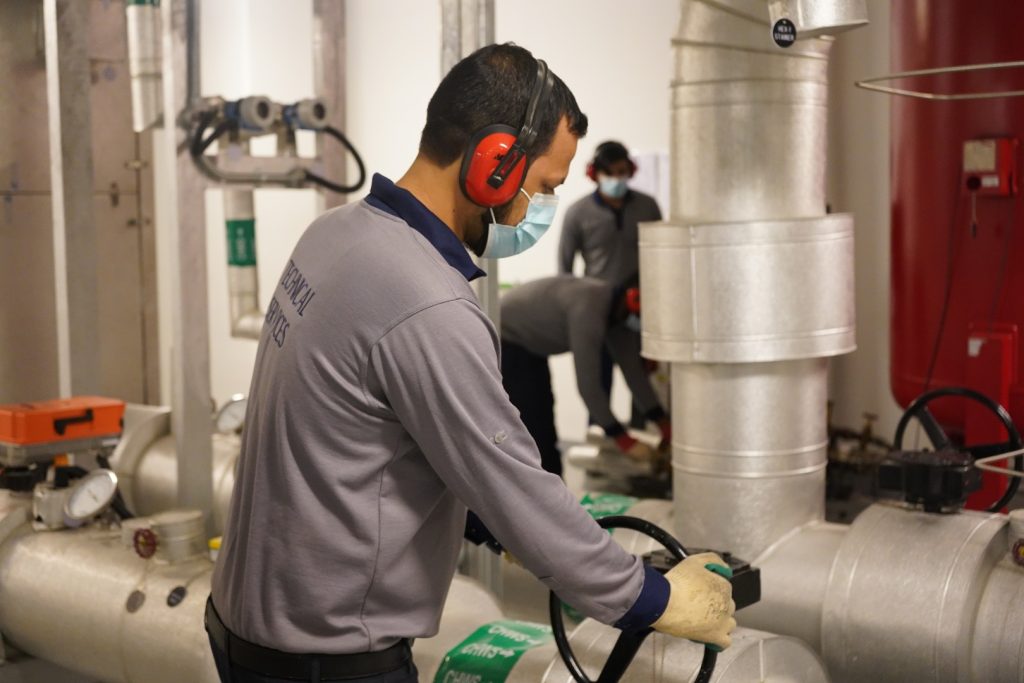Driving Facility Performance through Effective FM, Asset Management, and Lifecycle Management Integration
By Sanjay Bhatia, Project Director at EFS Facilities Services Group
Facilities management (FM) plays a critical role in asset management and lifecycle costing. FM professionals are responsible for managing and maintaining the physical assets of an organization, such as buildings, equipment, and infrastructure. Effective FM practices can significantly impact an organization’s overall asset performance and cost-effectiveness. In this article, we will explore the role of FM in asset management and lifecycle costing, referring to best practices.
Effective asset management requires organizations to manage assets throughout their lifecycle to maximize their value and optimize their performance. The asset lifecycle comprises several stages, including acquisition, operation, maintenance, and disposal. Asset management is the process of managing an organization’s physical assets to achieve the desired objectives, such as reducing costs, improving efficiency, and maximizing the asset’s lifespan. The lifecycle costing approach involves considering all costs associated with an asset’s lifecycle, including acquisition, maintenance, and disposal.
Asset management and lifecycle costing are essential components of any organization’s strategy for managing its assets effectively. In today’s competitive business environment, organizations need to ensure that they are maximizing the value of their assets and minimizing costs throughout the asset lifecycle. To achieve this, organizations can use ISO standards and best practices.

ISO standards provide guidelines and frameworks that organizations can use to manage their assets effectively. The ISO 55000 series provides a framework for asset management, which includes the management of physical assets, financial assets, and other types of assets. The standard helps organizations to optimize their asset performance and reduce costs throughout the asset lifecycle.
In addition to ISO standards, there are many best practices that organizations can follow to optimize their asset management and lifecycle costing processes.
These include:
- Establishing clear asset management policies and procedures
- Establishing a comprehensive inventory of all assets
- Assessing the condition and performance of each asset
- Developing a maintenance and replacement plan for each asset
- Collecting data on the various costs associated with each asset
- Analysing the data to identify opportunities for cost savings and optimization
- Monitoring and reviewing asset performance regularly
- Continuously improving asset management and lifecycle costing processes
An essential step in effective asset management is to establish a comprehensive inventory of all assets. This includes not only physical assets such as buildings, equipment, and installations but also intangible assets such as intellectual property, patents, and trademarks. Once an inventory has been established, it is important to assess the condition and performance of each asset to determine the maintenance and replacement needs.
Lifecycle costing is a key component of effective asset management. It involves evaluating the total cost of an asset over its entire lifecycle, including acquisition, operation, maintenance, and disposal. This approach takes into account not only the initial purchase price but also the ongoing costs associated with owning and operating the asset. By taking a comprehensive approach to costing, organizations can make informed decisions about asset acquisition, maintenance, and disposal.
FM plays a crucial role in asset management, starting from the asset’s design and construction through to its operation and maintenance. FM professionals must ensure that assets are maintained to high standards, providing a safe and comfortable working environment for all occupants, including visitors.
 Effective FM practices can help organizations achieve the following benefits:
Effective FM practices can help organizations achieve the following benefits:
- Improved Asset Performance: Effective FM practices can optimize asset performance by ensuring that assets are maintained to high standards, reducing downtime and minimizing maintenance costs.
- Cost-Effective Asset Management: FM professionals can manage the cost of maintenance, repairs, and replacements, ensuring that assets are managed cost-effectively.
- Enhanced Risk Management: Effective FM practices can help organizations to identify and manage risks associated with asset ownership and management.
- Better Decision Making: FM professionals provide data and insights to inform decision-making on asset acquisition, maintenance, and disposal.
To achieve these benefits, organizations must adopt best practices in FM and asset management. Some of the best practices include:
- Asset Management Strategy: Organizations must develop an asset management strategy that outlines the objectives, policies, and procedures for managing assets. The strategy must align with the organization’s overall goals and objectives.
- Asset Register: An asset register is a database that contains information on all the organization’s assets. The register must include details such as the asset’s location, age, condition, and maintenance requirements.
- Preventive Maintenance: Organizations must adopt a preventive maintenance approach to ensure that assets are maintained to high standards. Preventive maintenance involves conducting regular inspections and maintenance activities to prevent asset breakdowns.
- Performance Monitoring: Organizations must monitor the performance of their assets regularly. Performance monitoring involves collecting data on asset performance, analyzing the data, and taking corrective actions if necessary.
- Training and Development: FM professionals must undergo regular training and development to keep up with the latest best practices and technology in FM and asset management.
Conclusion
Effective FM practices are essential for organizations to manage their physical assets effectively. FM professionals play a crucial role in asset management, from the asset’s design and construction through to its operation and maintenance. Organizations must adopt best practices in FM and asset management to achieve the desired objectives, such as reducing costs, improving efficiency, and maximizing the asset’s lifespan. By implementing best practices, organizations can achieve significant benefits, such as improved asset performance, cost-effective asset management, enhanced risk management, and better decision-making.






















 Kuwaiti developer URC signs with Ahmadiah Contracting for the Commercial District development at Hessah AlMubarak
Kuwaiti developer URC signs with Ahmadiah Contracting for the Commercial District development at Hessah AlMubarak